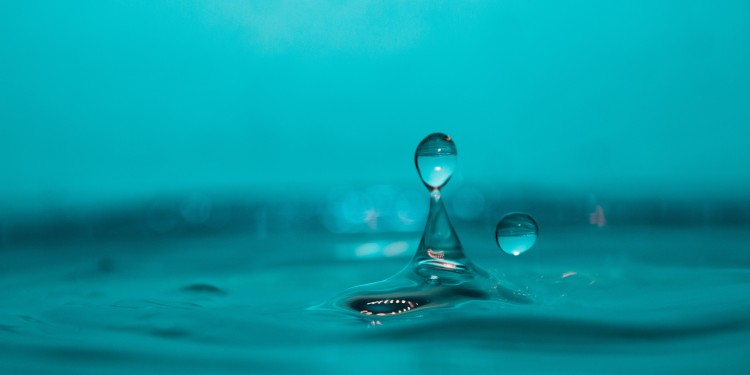
Invisible treasure
The largest freshwater resources worldwide are underground and invisible. Without these resources, human life would be barely conceivable. Reason enough to talk about the water which flows unnoticed beneath our feet: groundwater.
To begin with a global view: only three percent of the Earth’s water reserves are freshwater; the rest is salt water. Of this freshwater, only about 0.3 percent exists as surface water in rivers and lakes. More than 69 percent of the freshwater occurs in glaciers and ice caps. The rest forms groundwater. This means that groundwater represents the most important source for providing humans with freshwater. However, only a small part of the groundwater can be used by us. In Germany, for example, the supply of drinking water depends on the groundwater, as around 60 percent of our drinking water comes from this groundwater.
But how are we actually to imagine groundwater? Where groundwater occurs, it completely fills the Earth’s underground cavities. It occurs in pores or fissures in the underground rock or in small caves. The type of cavity depends on the surrounding rock. In loose sand/gravel deposits (for example, the sand-and-gravel ridge in the Münsterland) a lot of groundwater flows through the open pore cavities at a slow but constant rate. In solid, fractured and slightly karstified chalky marl rock (for example in the Baumberge hills) there is less groundwater flowing through the connected, eroded cavities, but at a much greater speed. This has nothing to with water veins which many people believe in, because the network of fine fissures occurs mostly in a regular and close-knit form underground.

Why is it so important to look at the subject of groundwater? As extreme weather events such as drought and heat will increase in our region too, there will be a reduction in the formation of new groundwater. In other words, groundwater as a resource will become scarce. Nor does torrential rain – which mostly occurs only locally – benefit the groundwater: most of this rain flows away on the Earth’s surface and leads, rather, to flood waves along the waterways. The light, constant drizzle occurring in the Münsterland, on the other hand, makes a far better contribution to the formation of new groundwater. (Please remember this, the next time you ride your bike to the university and grumble at the rain …) Due to the sinking groundwater levels – sometimes, just a few decimetres are enough – less and less groundwater emerges at springs and, along rivers, at surface waters. The result is that, in long dry periods, these can dry out earlier in the year and for longer periods of time. Farmers, too, have to contend with ever longer dry periods – also in our region. As a result, the number of applications from farmers for permission to use groundwater for watering their fields is increasing, which also adds to the pressure on groundwater as a resource.
Negative impacts on the quality of groundwater play an important role. Along with the rainwater seeping into the ground, various other substances are also transported into the groundwater. This, obviously, depends on the use to which the surface of the terrain is being put and varies over time and over the area in question. A whole new article could be written on this aspect.
Last but not least, the area taken up by groundwater consists not only of rock and water with all the substances they contain; it is also a sensitive habitat for groundwater organisms. Minute groundwater creatures, eyeless and transparent, live in the groundwater; they have an energy balance which has adapted to water with a constant temperature of around ten degrees, with little oxygen and little food, and they can live for several years under these conditions. The largest group of species is the crustaceans. They have a symbiotic relationship with various bacteria, single-cell organisms and viruses. As an ecosystem, groundwater performs a very important service for us humans. Only a groundwater area which is in a good ecological condition can treat and cleanse the groundwater underground in such a way that we can user it as drinking water. In the case of a groundwater area displaying major deviations from good ecological conditions, we humans would have to take over the – costly and resource-intensive – technical treatment of the groundwater obtained.
Although the quantity of groundwater and its chemical state are examined and controlled through statutory measures, there are still no legal stipulations as regards the ecological state of the groundwater. To that extent, there is still a great need for research in connection with our groundwater and its ecosystem.
Author Dr. Patricia Göbel is a lecturer at the Institute of Geology and Palaeontology. One of the focuses of her research is rainwater and groundwater management.
Save the date:
This year, the science festival "Schlauraum Münster" is dedicated to the guiding theme "Ground:Water". From June 18 to 24, universities will get to the bottom of the element water from different scientific perspectives. At special locations at, in and on the water, around Münster and in the middle of the city, science will be presented in an entertaining way and invites visitors to participate.
This article first appeared in the University newspaper "wissen|leben”, No. 3., 4 May 2022.
